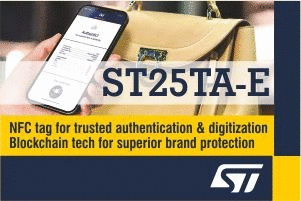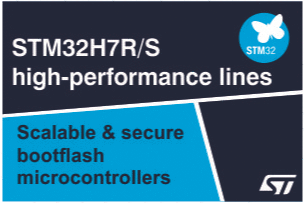Mobile health delivery, personalized medicine, and social media applications could transform health care. But potential advances in electronic health (e health) will be achieved only if standards for information and communication technologies (ICT) facilitate interoperability among systems and devices, provide privacy and security, and address the needs of the developing world.
In a Technology Watch Report entitled “E health Standards and Interoperability ”, published in April 2012 by ITU’s Telecommunication Standardization Sector (ITU–T), Dr Laura DeNardis of American University in Washington DC explains why rapid development of e health standards must accompany three trends in electronic health care in the coming decade: advances in healthcare delivery via mobile and wireless e health technologies; personalized medicine; and interactive health care via social media and Web 2.0 applications. This article focuses on trends in e health over the past year, and is based on extracts from the new report.
Machine-to-machine communication
Perhaps the most progress over the past year has been in remote health care and diagnostics, for example in the electronic monitoring of patients. This progress is being driven by the pervasiveness of ICT, by wireless capability, and by the relative affordability of devices. It is also being driven by standardization efforts and pilot projects, including many in the developing world.
Advances in remote clinical care technologies now enable doctors to provide medical assessments and treatments from a distant location via real-time multimedia interactions with the patient, such as a video feed transmitted over a telecommunications network.
Remote electronic patient monitoring systems have great potential to improve patient care for people in rural and inaccessible regions. With devices such as blood glucose monitors, blood pressure devices, or heart monitors, and using telecommunication networks, medical providers can electronically observe a patient’s health status remotely. The exchange of information among these various remote devices is sometimes referred to as machine-to-machine communication (M2M).
Big data
Another major trend in e health, at a public health rather than individual level, is aggregated public health data. The availability of standardized digital patient data presents unprecedented opportunities for data aggregation.
Enormous collections of aggregated health data are often described colloquially as “big data” — a term of art describing information stores in the terabyte to petabyte range. These data stores are so large that they cannot be manipulated by routi edatabase management tools.Genomic information stores, for instance, are usually considered “big data” stores.
Questions remain, however, about adequate anonymization of digital data to protect individual privacy, as well as the use of such data to discriminate in insurance coverage or employment. Also, concerns arise about the accuracy and quality of data collected for administrative or insurance rather than clinical — purposes.
Aggregated health data nevertheless provide a number of public health benefits, such as aiding health research, assessing the efficacy of pharmaceutical products, providing an overview for patients interested in certain treatments, or helping governments monitor overall public health conditions and determine where to allot scarce resources.
Health care via wireless and mobile e health technologies
There is considerable enthusiasm for capitalizing
on ubiquitous mobile technology infrastructure to improve healthcare delivery and access to health information (m health), particularly in low- and middle-income countries. Certainly, mobile phone systems are encroaching upon and supplementing health-related services traditionally provided via land-line telephone networks, such as emergency dispatch services, health information lines and call centres, appointment systems, and pharmacy ordering systems.
Mobile health has not yet fulfilled its potential. A World Health Organization (WHO) global survey on e health found that “the dominant form of mHealth today is characterized by small-scale pilot projects that address single issues in information sharing and access”. But several mobile phone- based health-related applications are gaining ground. These include public communication during natural disasters or public health pandemics, patient self-education about health care, remote patient-to-physician communication via a mobile device, and gathering public health data.
Less well-known are mobile applications to detect counterfeit drugs. These drugs can have fatal or debilitating effects and often target populations in impoverished regions. Mobile applications such as mPedigree allow patients to send a unique product code via text message and receive back a text message indicating whether the medicine is valid or a counterfeit.
Country-specific examples of mobile e health initiatives are described in the recent ITU–D Study Group 2 report “Mobile e Health Solutions for Developing Countries”, Question 14–2. ITU–T’s earlier “Roadmap for Telemedicine” also outlines mobile e health applications and barriers. There are many challenges to emerging m health applications, including how to ensure the accuracy of medical information obtained by patients via mobile devices, how to secure patient-to-provider communications over mobile networks, and how to guarantee adequate service reliability for remote monitoring functions.
Personalized medicine
Advances in computing and genomic technologies are expected to provide unprecedented innovations in personalized medicine. The National Cancer Institute of the National Institutes of Health in the United States defines personalized medicine as: “A form of medicine that uses information about a person’s genes, proteins, and environment to prevent, diagnose, and treat disease”.
The National Human Genome Research Institute suggests that personalized medicine will “transform health care” because of its potential for early diagnosis of diseases, highly tailored treatment remedies, and the ability to foresee and avoid adverse drug side effects.
This area of cutting edge science is also an area of e health, because of the intensive computing resources necessary to decode and calculate personalized medical records from biological samples, the technologies necessary to store and transmit this information, and the standard formats in which to encode and usefully share personalized and biologically derived information.
Personalized medicine will be technically dependent on the electronic health record, containing data collected by health providers, pharmacies, clinical laboratories and hospitals, creating a detailed and accessible record of a patient’s medical history. At present, legacy systems developed by different manufacturers use proprietary formats that are not interoperable, sometimes even within a single healthcare system. Unsurprisingly, the greatest concern about permanent, biometric, and possibly ubiquitous digital records is how to protect individual privacy and under what conditions to grant access.
Social media and health 2.0 technologies
Social media (Web 2.0 technologies) — Internet
applications that are geared towards interactive communication or user-generated content — are moving into health. One nascent trend is for patients to manage their own personal health data online, or health data for elderly parents or for children. Another emerging trend is the use of online reputation systems to rate medical services. Patients consult medical information online, and they also turn to online social media communities for peer-to-peer support and information. Many of these social networking sites promote positive health-related activities. Sometimes sites provide a space for patients to ask and answer questions about diagnoses and treatment. This raises serious concerns about the preponderance of inaccurate and unprofessional medical advice online.
Using social media for remote clinical care raises similar questions to those raised by any other type of technology delivering such services. The main concerns include the legal liability of healthcare delivery, and the technical and social steps necessary for preserving patient confidentiality and ensuring adequate security and reliability of information transmitted over the Internet via social media applications.
Standardization efforts to support e health initiatives
Whether e health initiatives are for mobile health
applications or remote multimedia diagnostics, they depend on core telecommunication services and infrastructure. These are, in turn, dependent upon the standards that address specific requirements — such as interoperability, security, mobility and reliability — necessary for supporting advanced e health applications.
ITU–T Recommendations address these standards requirements in two ways. The first category comprises ITU–T standards that support and enable e health initiatives but are not specific to e health applications. Examples include standards for digital subscriber lines, digital video or image compression, information security, quality of service, and voice over the Internet.
The second category covers ITU–T standards that are specifically relevant to e health. For example, the new ITU–T Focus Group on M2M will initially focus on e health applications. The group will perform a gap analysis in the M2M health care area, identifying requirements and analysing the extent to which existing protocols meet these requirements. The group is expected to identify future ITU–T standardization work in the M2M area. Its first meeting in April this year in Geneva attracted many experts from the health care and ICT fields, including participants from the World Health Organization (WHO) and Continua Health
Alliance. Future meetings, open to ITU members and non-members, will take place in Beijing (26–28 June 2012), as well as in Geneva and in the United States later in the year.
ITU, along with WHO, convenes global workshops to respond to the need for a comprehensive and coordinated approach to global e health standards development that ensures interoperability and sustainability. An example of efforts to promote such a dialogue was the convening of a joint ITU–WHO workshop on e health standards and interoperability in Geneva in April 2012.
Access to health care through ehealth: the standardization challenge
The reality is that most citizens in the world today do
not have sufficient and affordable access to health care.
E health technologies could help close this gap in the coming decade. Not only can e health services lower healthcare costs through efficiencies in health information delivery, but they can also reach underserved and remote areas. Innovations in e health can improve individual and public health, for example through personalized medicine and aggregated health data.
But e health is one of the most complicated and challenging areas from a standardization perspective. There are several reasons for this. First, the healthcare industry has an enormous installed base of legacy systems based on proprietary technologies. Second, e health systems inherently involve “big data”. Third, e health standards do not address one unified area of technology but hundreds of areas.
Finally, the e health standards arena is difficult because it involves, to a certain extent, competing or at least overlapping standards initiatives taking place in different institutions. Many of these initiatives have traditions of charging fees for accessing or implementing standards in products, a phenomenon which can drive up the cost of e health products or, in some cases, discourage innovation based on e health standards.
The e health advances outlined in this article will simply not occur without concomitant advances in interoperability, coordination, privacy and security, attention to emerging markets, and willingness to leverage pervasive technologies such as social media and mobile phones that are already in the hands of many citizens around the globe.






